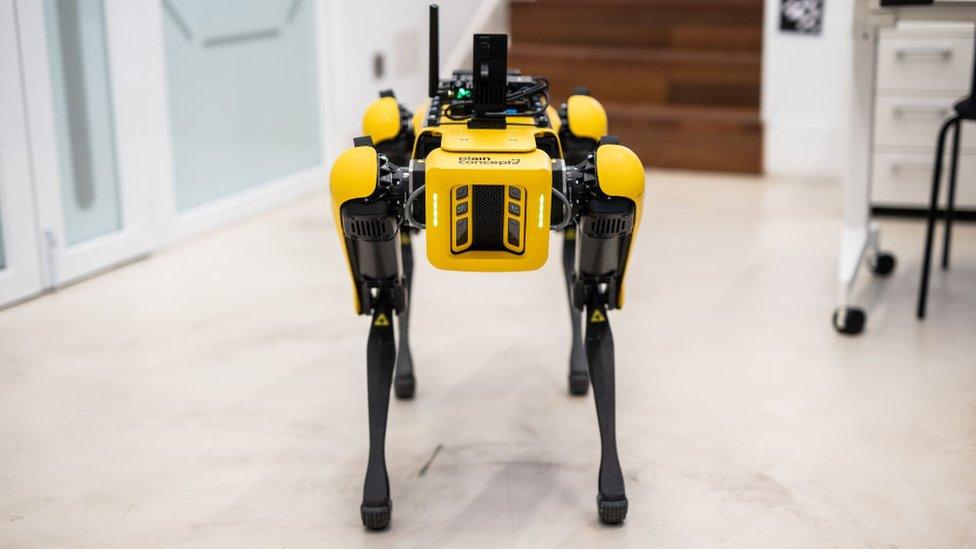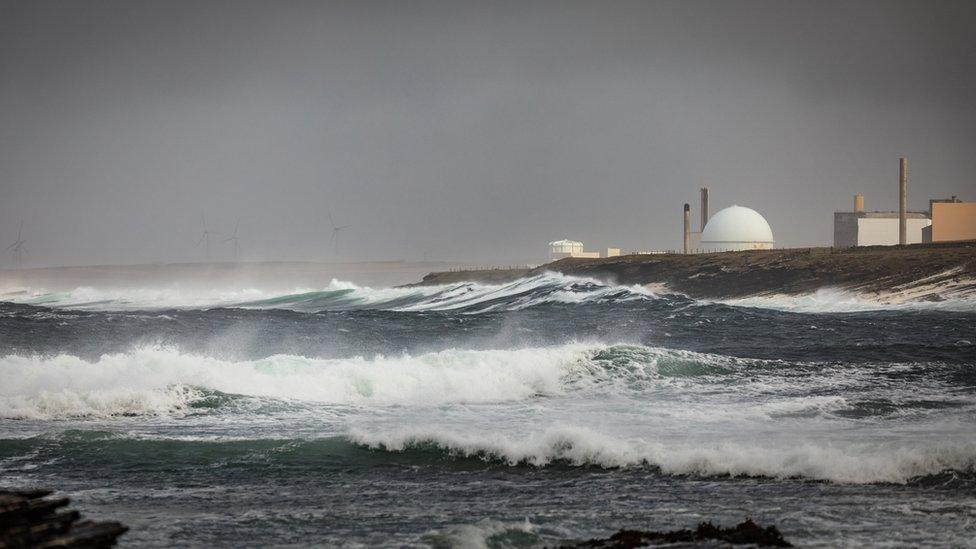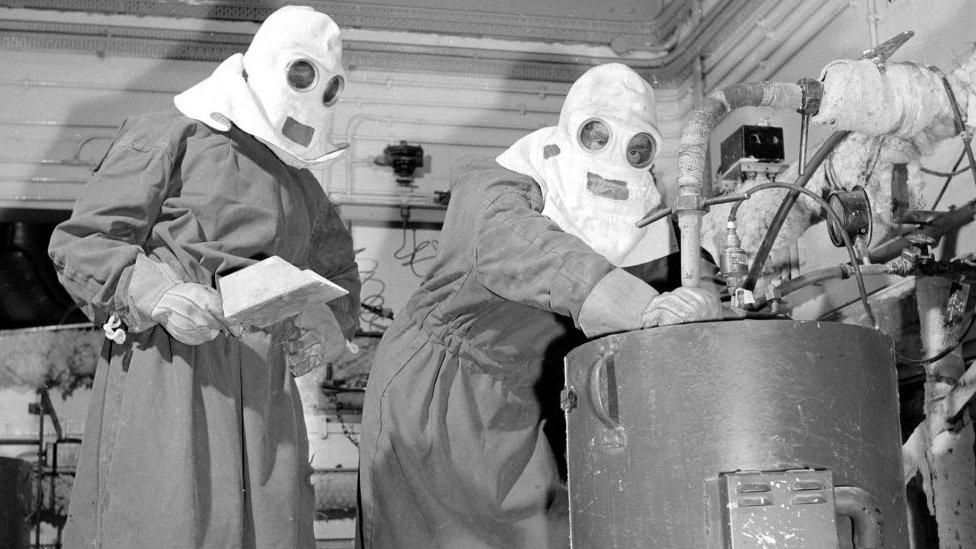Robot dog pack could help in Dounreay clean-up
- Published

A robot similar to this one is being out through trials at Dounreay
A pack of robotic "dogs" could help in Scotland's largest nuclear clean-up and demolition project.
Dounreay on the north Caithness coast, near Thurso, is in the process of being decommissioned and shut down.
The site is working with Cumbria-headquartered Createc on trials of a robotic quadruped called Spot for possible use in hazardous areas.
The tests could eventually lead to the deployment of more of the robots at the nuclear power complex.
Spot, a machine from US-based Boston Dynamics, has the ability to climb stairs, avoid obstacles and move over rough ground.
Trials ongoing at Dounreay, the UK's centre of fast reactor research and development from 1955 until 1994, could lead to the robots' use surveying areas dangerous for humans to work in.
Over the next 12 months, an employee from Cockermouth-headquartered Createc will train workers at the nuclear plant to use the remotely operated vehicle (ROV).

Dounreay near Thurso is in the process of being decommissioned

Dounreay was constructed in the 1950s to develop nuclear fast reactors
One of the planned trials involves Spot using 3D laser scanning to make an external survey of Dounreay's facilities.
Project manager Heather Fairweather said: "Spot is not just a gimmick, it's a practical tool that we can use to survey and monitor in areas where people should not or cannot go.
"We are investigating all the ways that we can use the ROV so that we can get the most out of it."
She added: "I believe that this is the way forward where operators can minimise their dose rates but still get the job done. It's not to replace operators, but to help them."
The Nuclear Decommissioning Authority is helping to fund the trials.
Robots have previously been used at Dounreay, including in the demolition of parts of a site associated with the first operational reactor to achieve criticality in Scotland more than 60 years ago.
Another device, described as a hi-tech worm, was used to probe the condition of a pipeline once used to discharge radioactive effluent.
Dounreay is in the process of being closed down, demolished and cleaned up.
The NDA has said it could be 2333 before the 148-acre site is safe for reuse.